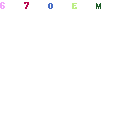

- #David blatner indesign cc 2017 essential training course pdf#
- #David blatner indesign cc 2017 essential training course registration#
#David blatner indesign cc 2017 essential training course pdf#
Now certainly, if you have a document that has objects that bleed off the page like this document does and you're sending this PDF to a commercial printing press, then you want to turn on the use document bleeds settings check box. But if you can, definitely check with them. These days, many printers don't want these things because they'll add them to the PDF themselves.
#David blatner indesign cc 2017 essential training course registration#
Then over here in the marks and bleed pain, you typically would not have these turned on for a PDF that was for web viewing, of course, but if we were sending this to a commercial printing press, I'd want to ask them do you want crop marks, do you want registration marks and so on. That's going to make the PDF much smaller when we export it. 300 and maximum quality would be good for a commercial printing job, but let's change this to say 150 and let's change the image quality to medium. Let's go ahead and lower the resolution here. Because this is a PDF that I'm going to be putting on a website and I'm expecting most people to view it on screen, maybe some of them will print it. Okay, let's jump to the compression panel. Note that these are the only interactive features that are saved out in a print PDF. Also, if you've used a table of contents or made any hyperlinks or bookmarks, you want to turn on the bookmarks and hyperlinks check boxes. It also allows people with visual disabilities to use this PDF with screen reader software. If you're going to post your PDF on a website, I highly recommend that you turn on the create tagged PDF checkbox because it allows for a much better web SEO. But in most cases like for books and magazines, you want to leave this set to individual pages. If you have spreads that you want to end up on the same page, like in the tri-fold brochure we saw in the last movie, then turn on spreads. We could export the entire document, but let's keep it simple and just export pages 30 to 31. Next of course, you could choose your page range.

For example, I almost always change the compatibility to at least Acrobat 6, if not later. In that case, I recommend that you choose high quality print, but don't stop there. But what if you're making a PDF that's not going to a commercial press? Maybe you're simply going to be sending it for a proof or maybe you're posting it on your website for someone to view on screen and then maybe they're going to print it out on their desktop printer. On the other hand, if you don't know who's going to be printing this, like maybe you're sending an ad to a magazine or a newspaper and you have no idea where it'll actually be printed, then the safest option is probably a PDF X-1A. X-4 is a much better quality, more robust PDF. I know all of these sound geeky, but you need to ask your printer: Do they want a PDF X-1A or something else? Now, if you're lucky, your printer will come back and say, you can give us a PDF X-4. For example, if you're sending this PDF to a commercial printing press, you're probably going to want to use one of these PDF X options. But I recommend that everybody start by choosing one of the Adobe PDF presets here at the top of the screen. And I go deep into the details of all of these features in my title here in the online training library, InDesign: Print PDFs. Now, when you click save, you get a lot of options to choose from. Even if you're using hyperlinks and bookmarks, that's a better choice. For the vast majority of PDFs, you should choose the Adobe PDF print option. The interactive option should only be used if your document has movies or buttons or something like that. Then from the format menu, you'll have to choose between two different PDF formats: PDF interactive or PDF print. To make a PDF, just go to the file menu and choose export. So it's crucially important that you be able to create robust PDF documents from InDesign. If you want to send a finished document to a printer, you should probably send them a PDF. If you want to send a proof of your file to a client, you'll likely send them a PDF.


 0 kommentar(er)
0 kommentar(er)
